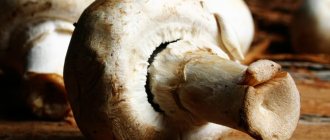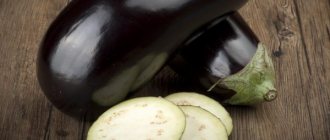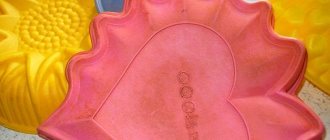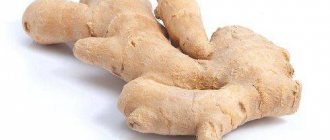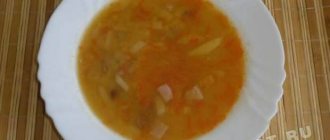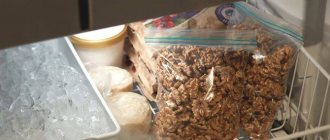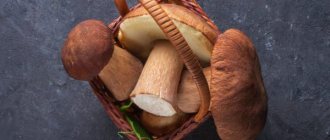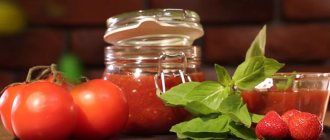Soaking nuts before eating. Do you know why you need to soak nuts before eating?
Did you know about this?
Everyone loves nuts, but not everyone knows that dry nuts contain enzyme inhibitors - these are substances that slow down the digestion process. That is why such nuts are so difficult to digest and are excreted from the body almost unchanged. When soaked, the nutritional value of nuts increases significantly!
When inactive, inhibitors prevent the nut from germinating, which helps keep it dry before it enters a humid environment. It’s not for nothing that nature itself came up with this complex mechanism, similar to how seeds germinate in water. That is why it is in water that the process of activation of nutrients in nuts occurs. As a result, all the most useful things are absorbed by the body. Almost all types of nuts are beneficial for the body: they improve brain function, support heart activity, remove cholesterol, etc. However, it should be remembered that in large quantities this healthy product can become poisonous to the body. The optimal dose is a handful of nuts per day. Nuts “revivified” with water contain even more useful substances, they taste pleasant, are easier to digest and are better absorbed by the body. Use these tips to know which nuts need to be soaked for how long. Walnuts - 8 hours. Almonds - 12 hours. Hazelnuts - 8 hours. Peanuts - 1-2 hours. Pine nuts - 8 hours. Macadamia - 4 hours. Cashew - 6 hours. The basic rule: the harder the nut, the longer you need to soak it. Get the most out of your food!
Do I need to dry it?
Soaked nuts can be consumed immediately. After draining the water, the kernels are laid out on a towel to remove excess moisture. For those who like to crunch, the method of dehydration at a minimum temperature in an oven or electric dryer is suitable. But it is worth remembering that it is advisable to bake nuts on a baking sheet for at least 4 hours at a temperature no higher than 60–70 degrees. Drying quickly at high temperature will have a roasting effect.
Kernels soaked in water are healthier than dried and fried ones. They increase the amount of active ingredients that are more easily absorbed by the body. In addition, the taste improves and the nut becomes softer. You should try soaking nuts yourself at least once to feel the difference.
Do I need to soak walnuts before eating? Soaking nuts: what happens
These chemical transformations transform soaked seeds and nuts into easily digestible foods. They acquire a sweetish taste because... Inhibitors are washed out with water along with their bitterness. We can already say that nuts and seeds that have undergone the soaking procedure are full of nutrients presented in the most easily digestible form.
And there is something to be absorbed there! Imagine that even the tiniest seed, the most inconspicuous nut, contains a full-fledged active system of plant enzymes, a huge amount of macro- and microelements, flavonoids, antioxidants and vitamins. This entire rich complex of active substances is present in living plant tissue and resides in fruits in balanced quantities and ideal proportions.
Soaking significantly increases the nutritional value of seeds and nuts, changes the taste for the better - they acquire sweetness, juiciness and are almost as good in taste and appearance as fresh ones. In addition, if you doubt whether you bought a spoiled product, or whether it has been treated with some substance for the purpose of longer storage, preventing rotting, mustiness, and eating by insects and small rodents, soaking is a sure way to check this. Processed or spoiled nuts and seeds will lose their original color when soaked, become too soft, or, on the contrary, will not absorb moisture. After soaking, high-quality products should look like fresh ones.
How to eliminate protective factors
After soaking, no phytic acid remains in the nuts (Photo: Pixabay.com)
Soaking is a simple and effective way to get all the beneficial nutrients from nuts. When in contact with water, the core becomes saturated with moisture, which activates enzymes and changes its composition. It increases the amount of vitamins and antioxidants.
And these substances become available to the human body, since phytic acid passes into water when soaked. Removing phytic acid improves the absorption of nut pulp in the intestines, preventing unpleasant consequences such as bloating and increased gas formation.
How and why to soak nuts, legumes and grains
How and why do you need to soak nuts, legumes and grains? It turns out that they contain substances - natural defense mechanisms that interfere with normal digestion and absorption by our body
Meet phytic acid
An acid that preserves mineral phosphorus in plant tissues. Various varieties of nuts, seeds, legumes and grains contain huge amounts of it. The peculiarity of this acid is that our body categorically refuses to absorb it. In addition, it interferes with the proper absorption of macronutrients and minerals.
Confrontation between phytase and phytin
In addition to acid, nuts, seeds and beans contain phytase. An enzyme, one of whose functions is the decomposition of phytin. This process is activated only when the fruit is wet and ready to start moving upward. Having received the phosphorus necessary for development, the plant begins to grow.
How to soak properly
To properly soak seeds and nuts, they need to be placed in a glass bowl with warm and clean water. For two glasses of water there is one glass of fruit - the ratio is 2:1. Some nutrition experts recommend adding a teaspoon of sea salt to water, supposedly to neutralize substances that slow down the enzymatic reaction. After this, the vessel with the fruits must be placed overnight in a dark place at a temperature of 20-25 degrees. It is better to cover the bowl with a gauze towel so that the plants can breathe.
Let us remind you about proper nutrition in summer: basic rules and sample menu. You can live without diets by following the principles of healthy eating, allowing your body to get everything it needs and your figure to remain slim. Summer is the best time to “organize” such a diet so that you don’t go hungry and don’t weigh down your figure. Politeka also wrote how to eat everything and stay slim: the best diet.
How to wash
The product is sold in shell and peeled form. The washing procedure is almost the same.
In a shell
Purchased nuts in shell should be rinsed under the tap using warm water. Then dry under normal conditions, spreading it in one layer on a cloth or towel so that they do not touch each other.
If there are a lot of nuts, then it is better to wash them in a large container, for example, a saucepan. After washing the fruits, you must first remove them and then drain the liquid. If you perform the procedure in reverse order, the dirt that has settled to the bottom will again appear on the surface of the shell.
Peeled
Often, not wanting to waste time and labor on cleaning, we buy already peeled nuts by weight. They should be processed and washed in this way:
- Place the raw materials on a clean, hard surface.
- Sort thoroughly, discarding moldy and dry fragments.
- Rinse under running water. It is advisable to douse the peeled nuts from the market with boiling water.
- Remove from container and drain water.
- Dry on a towel (cloth napkin) and store or eat.
Washed nuts will lose their crunchiness, which is loved by many. To purchase it, you can dry them slightly.
The water after washing the walnuts was not so clean
Do I need to soak roasted nuts? Why do you need to soak nuts?
The soaking procedure helps to avoid unpleasant sensations and help the body quickly absorb healthy protein. It awakens dormant kernels and starts the germination process. As a result, the taste changes along with the structure, the nut is enriched with enzymes that are responsible for the development of the sprout, and harmful phytic acid is eliminated.
The presence of phytic acid is noted in almost all types of nuts. During ripening, it provides the fruit with natural protection from premature eating in the natural environment by animals or birds. By the time of maturity, a small percentage of phytin remains in the kernel. But with constant consumption of raw nuts, acid can accumulate, causing harmful effects.
Explaining why you need to place the kernels in water before eating, nutritionists also note the harm of daily consumption of roasted nuts. If soaked almonds acquire the softness of marzipan with the aroma of exquisite amaretto and enrich the body with beneficial enzymes, then fried almonds produce the opposite effect.
During heat treatment, the oils contained in the composition interact with phytic acid and tannin (concentrated in the shell), as a result of which they oxidize. The amount of oil that increases during frying can cause discomfort in the stomach.
The benefits of consuming soaked nuts are observed if the daily intake does not exceed 300 g.
Do I need to wash before use?
Nuts are no different from any other product. Therefore, it is imperative to wash them - even if you collected them personally from a walnut tree growing on your site.
In a shell
The reasons for washing walnuts in their shell are as follows:
- A product sold in a store or market is located in the open air, which means dust and dirt particles can settle on it.
- Bacteria, viruses and parasite eggs can get onto the product from people who collected or who trade nuts. Few people wash their hands after touching a product - and even if the product is in the public domain and anyone can touch it, there are no guarantees of its biological safety.
- In order for nuts to be stored for a long time, they are often treated with chemical compounds. Eating them, to put it mildly, provides little benefit - so it is better to wash off the excess chemicals before eating.
Poll: Do you wash shelled nuts from the market?
Not really
Peeled
It is especially important to rinse nuts if they:
- Sold in purified form by weight.
- If they are sold on open markets.
- If they were bought secondhand. Even if the seller is the one who grows the walnut trees and harvests them, it cannot be guaranteed that he carries out the harvest with clean hands.
Advice
Before eating nuts, you must first rinse them - even if they are sold in packaging.
Why soak nuts with salt? Why soak nuts?
Many people love to chew nuts. They are known to be a source of protein and a variety of microelements. However, few people know that it is necessary to soak nuts before eating.
Why do you need soaking?
Nuts are a type of seed with which the plant reproduces. Therefore, dry nuts are absorbed by the body poorly and slowly - nature has provided a mechanism to protect the embryos. Enzyme inhibitors are responsible for this, which “preserve” the nutrients in the nut, preserving the viability of the sprout before entering the nutrient medium. In addition to preserving the viability of the embryo, they protect it if it enters the stomach and suppress the secretion of digestive juices responsible for the digestion of food. In addition, there is evidence that the phytic acid contained in nuts greatly slows down the absorption of minerals. Therefore, large consumption of dry nuts can lead to rickets and osteoporosis. An increase in humidity serves as a signal that the nut is in a favorable environment and starts growth processes. As a result, enzyme inhibitors are destroyed, the enzymes themselves are released and begin the process of converting complex organic compounds into simpler ones. There is no need to wait until the nuts sprout: most of the nutrients will go into the sprout. Several hours of soaking will activate the necessary processes, as a result of which the nuts will become healthier and absorbed faster. Also, soaking nuts before eating has a positive effect on the taste: the bitterness disappears into the water, the nuts become sweeter and more tender.
How to soak nuts correctly
The nuts are poured with boiled or filtered water, maybe hot, but not boiling water. Water takes twice as many nuts. Many health experts recommend adding sea or pink Himalayan salt to your water. There are tips on using soda for these purposes. It is believed that salt and soda accelerate the destruction of protective mechanisms. The time for soaking nuts depends on their type. Experts say that a sign of a high content of enzyme-inhibiting substances is the brown color of the skin. Therefore, nuts such as walnuts, almonds or pecans need to be kept in water for several hours. It is convenient to soak the nuts overnight and eat them in the morning. Light-colored fruits require less processing time; 2-3 hours are usually enough for them. Small nuts, for example, pine nuts, can be eaten without soaking at all, although many supporters of a healthy diet prefer to first fill them with water for at least a quarter of an hour. After soaking, the nuts need to be washed and peeled. When they are planned to be eaten not immediately, but over several days, the nuts are dried naturally, placed in a dry glass container and put in the refrigerator, where they can be stored for several days.
How to store different varieties
There are more than a dozen types of nuts. Each variety has its own characteristics and flavor profiles. Due to their structure, nuts are stored in different ways.
Cashew
This variety is usually stored at an air temperature no higher than +4-5 degrees. This condition allows you to preserve the variety for 12 months.
At room temperature between +18 and 23 degrees, cashews are stored for about 1 month. For long-term preservation, cashews are frozen in portions and thus extend the storage period to one and a half years.
Gretsky
Walnuts are the most common type of nut. They are rich in essential oils and contain high quality vegetable protein. For storage at room temperature, it is recommended to purchase a small amount of walnuts from a fresh harvest. Long-term savings are possible by placing the kernels in the refrigerator or freezer.
Coconut
Coconut is the drupe fruit of the coconut palm. It has a hard shell. Coconut storage has several characteristic features:
- Only unopened fruits are subject to long-term preservation;
- Fruits of a high degree of maturity are suitable, without external damage or signs of rotting.
Whole coconuts are stored away from sunlight and to prevent exposure to heat sources. The optimal temperature level should not exceed +5 degrees. Coconuts are not stored near fruits that produce ethylene, which helps speed up ripening.
Almond
Almonds are dried before storage. The top flake of the almond should not be wrinkled or damaged. Nuts can be stored at a temperature no higher than +5 degrees, with average air humidity, away from sunlight, for 12 months.
Pistachios
These are nuts that do not tend to be stored for a long time. To ensure that they do not lose their taste characteristics, sealed packaging with pistachios is placed in a dry place, where they can be stored for up to 14 days.
Hazelnut
Hazelnuts do not lose their beneficial properties for 3 months if stored in airtight containers. No moisture gets inside the packaging. 6 months after harvest, hazelnuts inevitably lose their natural softness.
Peanut
Peanut fruits are covered with a shell that reacts to moisture in a special way. It softens and leads to mold.
Brazilian
Whole Brazil nuts are an expensive product that is difficult to find on sale. It is recommended to freeze peeled kernels, since other methods negatively affect the taste characteristics.
Cedar
This type of nut contains an increased amount of oils, so storage is complicated by its structure. Pine nuts are stored unshelled. To save, use suitable containers. Food containers containing cedar shells are often frozen.
Purified kernels are consumed within 1-2 days. For sale, the method of packaging peeled kernels in sealed bags with air pumping is often used. This method is not suitable for home use, as it can only be done using special equipment.
Muscat
Nutmeg fruits are used to make spices. The fruits look like unripe apricots. The top shell is not suitable for use. The inner fruit can only be preserved if airtight packaging is used. This variety can be kept in a dry, dark place for up to 3 years.
Manchurian
The kernels are lightly calcined or fried before storing. This increases the length of the period when the nuts do not lose their quality. At a temperature of +10 to 14 degrees and provided that a suitable container is used, the kernels remain usable for 6-8 months.
How to soak nuts without salt. How and why should you soak Nuts?
How and why do you need to soak Nuts? It turns out that they contain substances - natural defense mechanisms that interfere with normal digestion and absorption by our body. Soaking nuts is a traditional method of deactivating these substances, which will allow us to consume nuts without harm to health.
I love Nuts. And I think that the people who don't like them are a minority.
I have always held pine nuts in high esteem! Having read a lot of research and information about the beneficial properties of Nuts in general, without any doubt I decided to seriously introduce them into my diet.
And not just Nuts for a snack, but their daily use. I decided to start with almonds.
And so, one evening, sitting and eating roasted almonds, “nutty” questions arose in my head.
For example, which Nuts are healthier: raw or roasted? Imagine my surprise to discover that the healthiest nuts are the soaked ones!
And why and how I will tell you in this post.
Why do you need to soak Nuts?
It turns out that all Nuts, without exception, just like grains and beans, have special protective mechanisms.
They protect themselves from predators who try to eat them all. And if herbivores can calmly cope with these protective mechanisms without any harm to their health, then we humans are not so lucky.
Nuts contain:
* Phytic acid, which attaches to minerals (Zinc, Magnesium, Iron, Calcium, etc.) and prevents their absorption in our gastrointestinal tract.
Recent studies say that without it, we are able to absorb 20% more Iron and 60% more Magnesium. And if you think carefully, these are very serious numbers that over time can lead to mineral deficiency.
It is for this reason that rickets and osteoporosis are diseases common among populations whose main diet is grains, beans and nuts.
The human body is able to cope with small amounts of phytic acid. About 100-300 mg per day.
But almond meal alone contains 1300!!! mg Phytic acid. And most people seriously lean on grains and cereals. It turns out that this is already a much larger amount than our body can handle without harm to our health.
* Digestive enzyme inhibitors, which deactivate our digestive enzymes and interfere with the normal digestion of food. This is one of the reasons why most people feel heaviness or pain in their stomach after eating Nuts.
Soaking deactivates Phytic Acid and digestive enzyme inhibitors, allowing us to better digest and absorb Nuts.
How to soak Nuts?
Our ancestors always prepared nuts before eating. Traditionally, they first soaked them in salt water, dried them in the sun, ground them and then cooked them.
Nowadays, when people want everything easier and faster, this practice has been forgotten over time. Which I think, like many other things, affects our overall health and well-being.
Soaking Nuts is a very simple and not labor-intensive process.
You will need:
- 1 part nuts
- 2 parts filtered boiled hot water
- pink Himalayan or sea salt (1 teaspoon for 1 cup of nuts)
- glassware ( )
Place the Nuts in a glass bowl, add salt and hot water, stir and wait.
Soaking time depends on the size and structure of the Nuts. For example, almonds and Brazil nuts should be soaked for 12 hours. Hazelnuts, walnuts, pecans and pine nuts for 8 hours. And cashews are 6.
After soaking, the nuts must be thoroughly washed and dried.
I simply place them on a baking sheet lined with parchment paper and place them in the turned off, closed oven for 24 hours. After that, I take them out and use them in my recipes or put them in the refrigerator, where I store them for up to 2 weeks.
Don't forget to skin the nuts (like almonds). Most antinutrients are concentrated in the skin.
In general, it is better to store all Nuts, even unsoaked ones, in the refrigerator, as they contain delicate oils that spoil very easily.
Every evening I soak 10 almonds, which I rinse in the morning and eat right away. It has already become a habit and I do it automatically, as one of the rules of a healthy diet.
Soaking Nuts is a traditional preparation method used by our ancestors and which has unfortunately lost its importance in modern times.
Soaking is necessary for the complete digestion of Nuts, so don’t be lazy and make it a necessary part of your diet.
Drying after soaking
Many lovers of nuts and seeds do not know that they need to be dried after soaking and why do this at all. Experts advise that at the end of the procedure, be sure to heat treat them.
You can use the following methods:
- Natural drying . It is enough to place the soaked product on a paper napkin or cloth in a well-ventilated room. Stir the kernels periodically to ensure they dry evenly.
- Electric dryer . Before starting drying, set the minimum temperature in the household appliance. The procedure can last up to 6 hours.
- Oven . Dry the soaked nuts in the oven at a temperature of +50...+80°C. Leave the nuts carefully placed on a baking sheet for up to three hours. Consume after cooling.
- Microwave . For this method, it is important to correctly set the low temperature. Just 1-2 minutes will be enough to dry the fruit.
Did you know? Walnuts contain a protein that is identical to milk protein. It is absorbed much easier by the body due to its high lysine content.
If you at least once try to soak walnuts yourself, you will immediately feel the difference from roasted and dried ones. Just be careful when consuming them so as not to cause stomach upset. Moderate consumption of such healthy fruits can become a habit, as one of the rules of a healthy diet.
